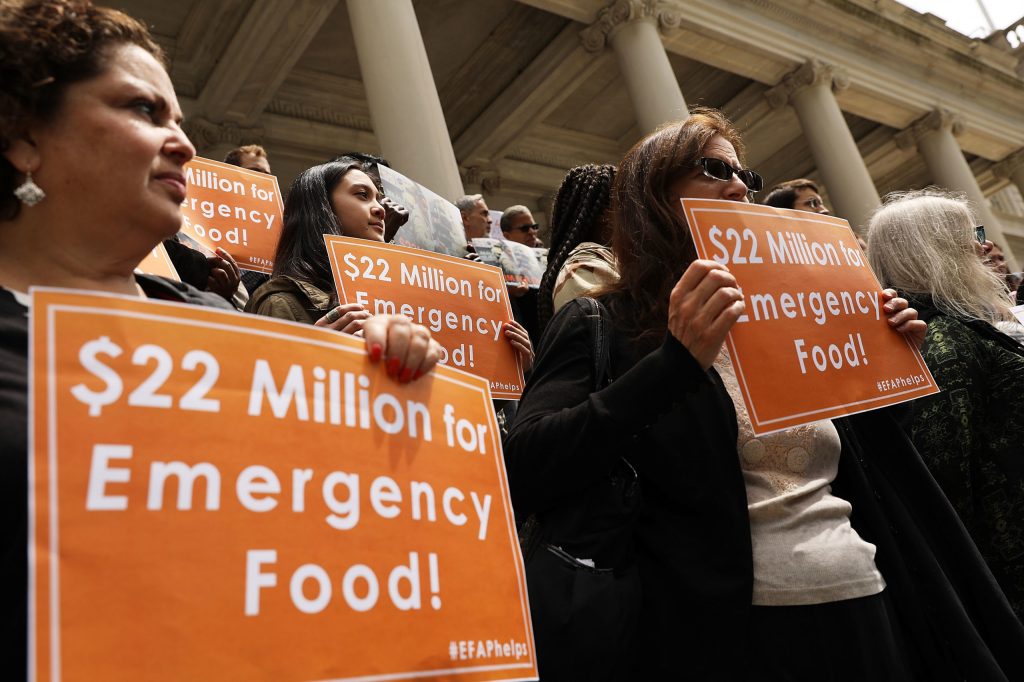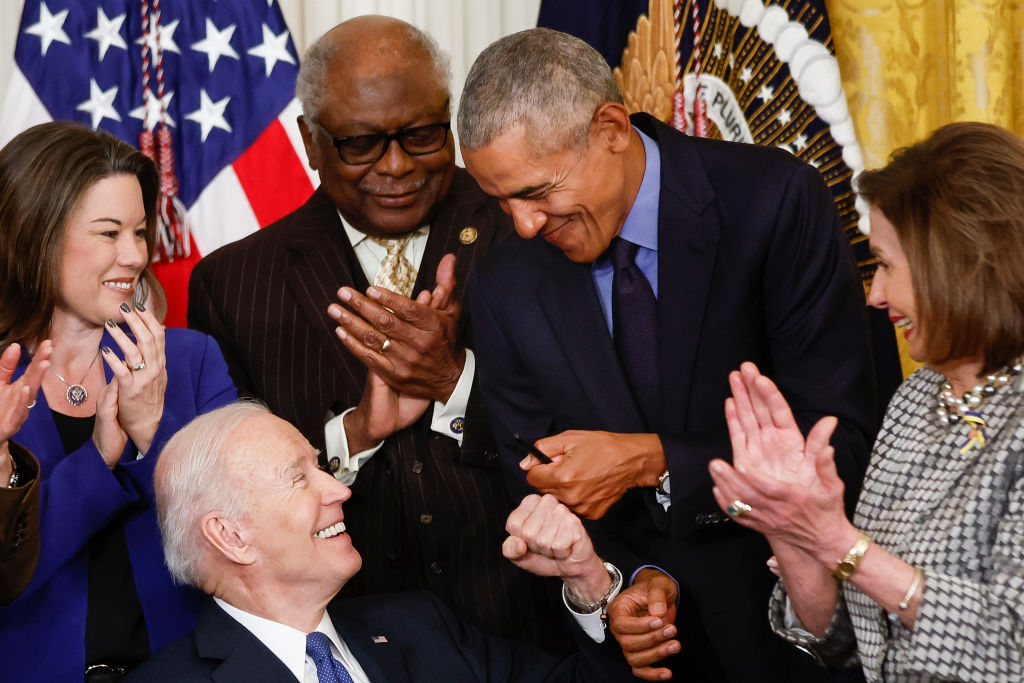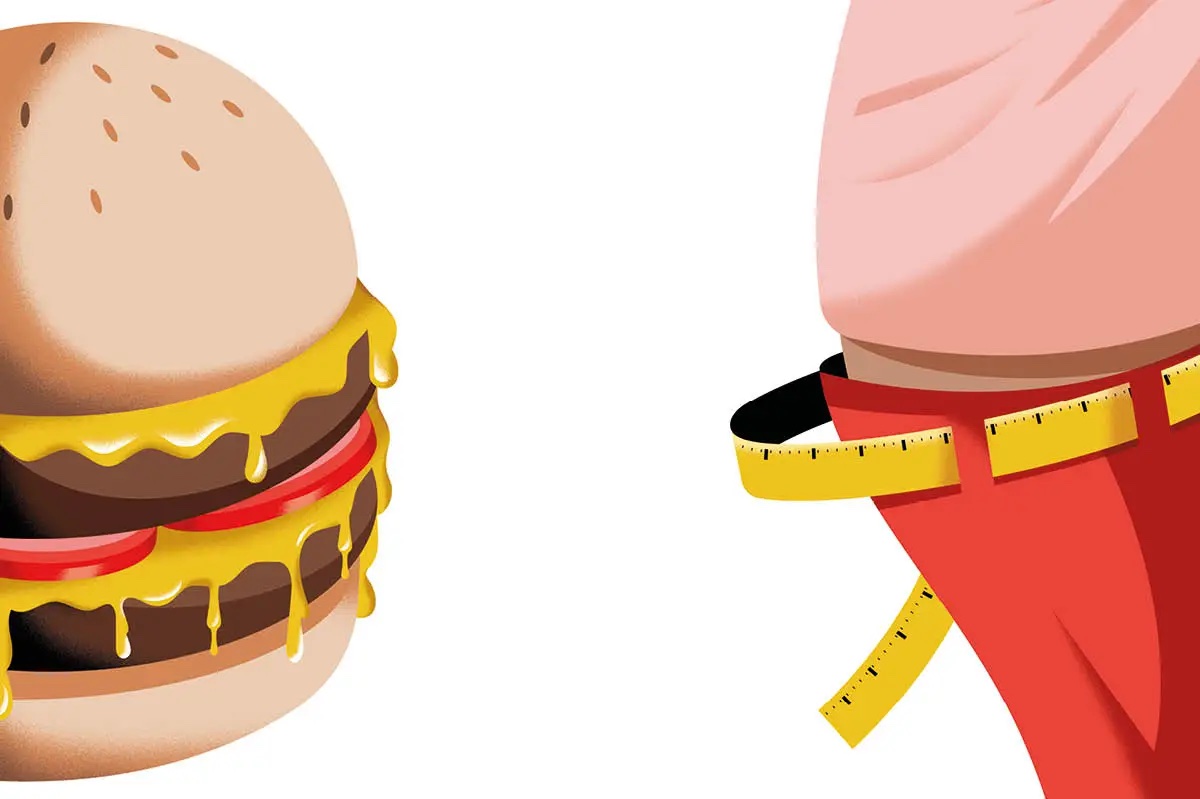No one starves in America. The public schools feed poor children breakfast, lunch and occasionally dinner. Church food banks, private charities and municipal programs are everywhere. Eating soundly is not always exciting, crunchy, convenient or microwave-ready, but getting adequate calories is not the nation’s problem.
Buying clean, washed lettuce, firm potatoes or a sweet pineapple during a February snowstorm is a small industrial miracle. In 1900 Americans spent about 40 percent of their income on food, and today about 10 percent. The standard claim that 20 million adults live in households that do not get enough to eat rings false. Americans are the people of plenty and commodities surpluses. They have low-cost, safe, tasty food galore. Too much food, it would seem, if gauging airport and stadium crowds on sight.
The Supplemental Nutrition Assistance Program — known far and wide as food stamps — helps feed 40 million low-income Americans. Administered by the US Department of Agriculture, it is the nation’s largest welfare program, funded at some $80 billion.
Delivered to cards by electronic benefits transfer (EBT), this program is extremely popular. The Biden administration’s $1.9 trillion American Rescue Plan Act includes what it calls a $12 billion “investment in food assistance.” Food benefits have been rising sharply for a decade. Since early 2020, the nation’s average benefit has jumped from about $121 to $232 per capita, and by household, $236 to $460 — that is, it has almost doubled.
By some economists’ lights, such social subsidies — factor in cash and housing assistance, Medicaid, child support, and indeed, unreported cash income, or in different circumstances, unemployment insurance or disability allowances — are rising to such a degree that they incentivize idleness. Low-level EBT fraud and misuse are perennial.
To the trembling Biden folks during the last year, “millions have struggled to put enough nutritious food on their tables.” Pledging to fight hunger, USDA deputy under secretary Stacy Dean promises to provide nutrition assistance for “struggling families and individuals” while “tackling systemic racism and barriers to opportunity that have denied so many the chance to get ahead.”
Morbid obesity is by all accounts a barrier to opportunity, but put that thought aside for a moment. In the anodyne, insulated policy world Dean inhabits, Americans are forever “struggling” and it’s all about the children.
How Dean intends to tackle racism inside the nation’s most extensive food program — one associated with long-term welfare dependency and heavily skewed toward poor blacks and Hispanics — no one knows. Identity plainsong taints the entire Biden enterprise of course, and Dean moves artfully within Washington’s non-profit-to-public-sector revolving door. Such diversity flourishes are now liturgical and expected.
Food and Nutrition Services overseer Cindy Long — her own background is in child nutrition policy — ideates a “healthy diet that supports good health and combats diet-related disease,” as the USDA pitches EBT profits to Big Ag and the S&P 500.
Food stamps cut many ways. The titans inside the national food complex — Cargill and Simplot, for example, or Coke, Pepsi, Kraft and ConAgra — are big winners. Retailers — Kroger and Walmart, CVS and Dollar General, Circle K — have huge EBT stakes. Ten thousand 7-Elevens, many of them run by South Asians — lots of Sikhs — and Middle Eastern immigrants, are a 24/7 metro staple. Real estate investment trusts, mom and pops and whole neighborhoods depend on one or another crumb from the $80 billion loaf.
And don’t forget the well-paid USDA apparatus itself, and its ample state-level agriculture and welfare affiliates. The USDA oversees the vast school lunch program too. One of the department’s highest paid senior executives, Long has a base salary of about $200,000 before add-ons, and a capital-city civil-service career that suggests Whole Foods in Old Town Alexandria more than it does the food mart at a Pilot Flying J.
It’s hard to calculate the extent to which EBT is a junk-food subsidy. The USDA does not disclose companies’ revenues from EBT purchases or what EBT users buy with their food subsidies. It has repeatedly refused requests to release any details.
Let me speculate. The answers are at odds with wishful thinking and rhetoric. The yummy, fatty, salty, sugary, high-calorie stuff that fills you up is not just in high demand. It’s profitable. The candy bars near the cash register are not there by accident. Junk food might not be economical, but it sure tastes good at first hit, and in a pinch, if that’s what’s available and the government is paying for it, so much the better. McDonald’s and other fast-food restaurant companies want into EBT, but so far the hot-food sales vein is largely untapped.
Putting healthy food within reach is a USDA motto. Isn’t it pretty to think so, of those inspiring EBT initiatives at farmers’ markets. Cooking nutritionally from low-cost staples — rice and beans, eggs, cheese, meats and vegetables — takes time and effort. Convenience foods and low-cost takeout, microwave ovens, shattered families, chaotic lives, and pure sloth conspire against sound diets.
Obesity — not overweight, stout or full-bodied, but all-out diabetes-and-heart-attack fat — is prevalent and rising. At a time of public-health fixations and dangerous co-morbidities, you would think reckless overeating would cause widespread official dismay. But as with many hazards in American life, it’s suddenly bad form to notice or criticize disorder. In the progressive playbook, obesity is a disease or disability. Self-discipline and agency disappear. Fat shaming is taboo. Fat is beautiful.
For most endomorphs of all classes, sexes and backgrounds, weight control is a lifelong drag. Some people are genetically predisposed to weight, like bad teeth or skin. For many strictly religious folks, food, unlike alcohol or fornication, is not off-limits. Eating healthy is not one of the Ten Commandments. The temptations of food are real. Additionally, Covid lockdowns have been rough on the weight-prone.
The Biden administration’s food policies are not about hunger, nutrition, healthy diets or combatting diet-related disease. Food assistance is not an investment but a disconcerting social expense. Food production and self-sufficiency are unquestionably of national interest. Public oversight begins with food inspection and sanitation. Cheap-labor enthusiasts ignore guest workers and illegals living in grim conditions to feed native-born, EBT-using Americans who would never do field work at any wage. Some producers resist supervision of animal husbandry to minimize cruelty and neglect.
Food reform is not on the horizon. In twilight America, instead, the deadly sin of gluttony vanishes. Trying to dictate improved food habits meets derision and legal obstacles, as former mayor Michael Bloomberg’s 2012 New York City soda-pop follies proved. Denying Medicaid to those with a Body Mass Index over 30 is not a political go.
The USDA, farm and food industry, retailers and marketers make the cornucopia happen, responding to buyer demand, sales and earnings. Economists call this consumer sovereignty. From farmers to fatties, America loves its government handouts and subsidies. Besides, the votes are in and it’s no contest. The demos wants another Slurpee and some more Cracker Jacks. It will leave the Meyer lemons and pluots to the toffs.

























